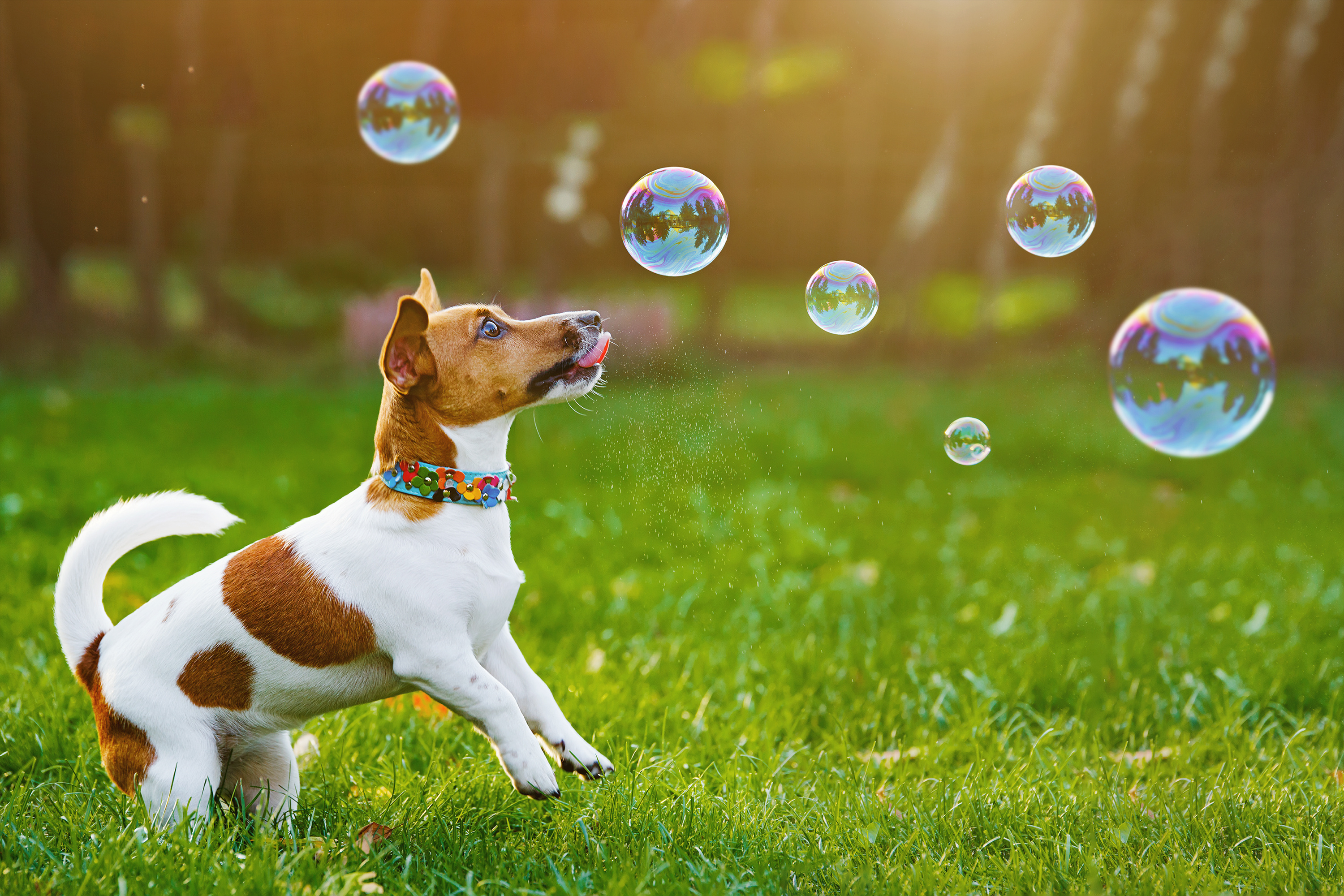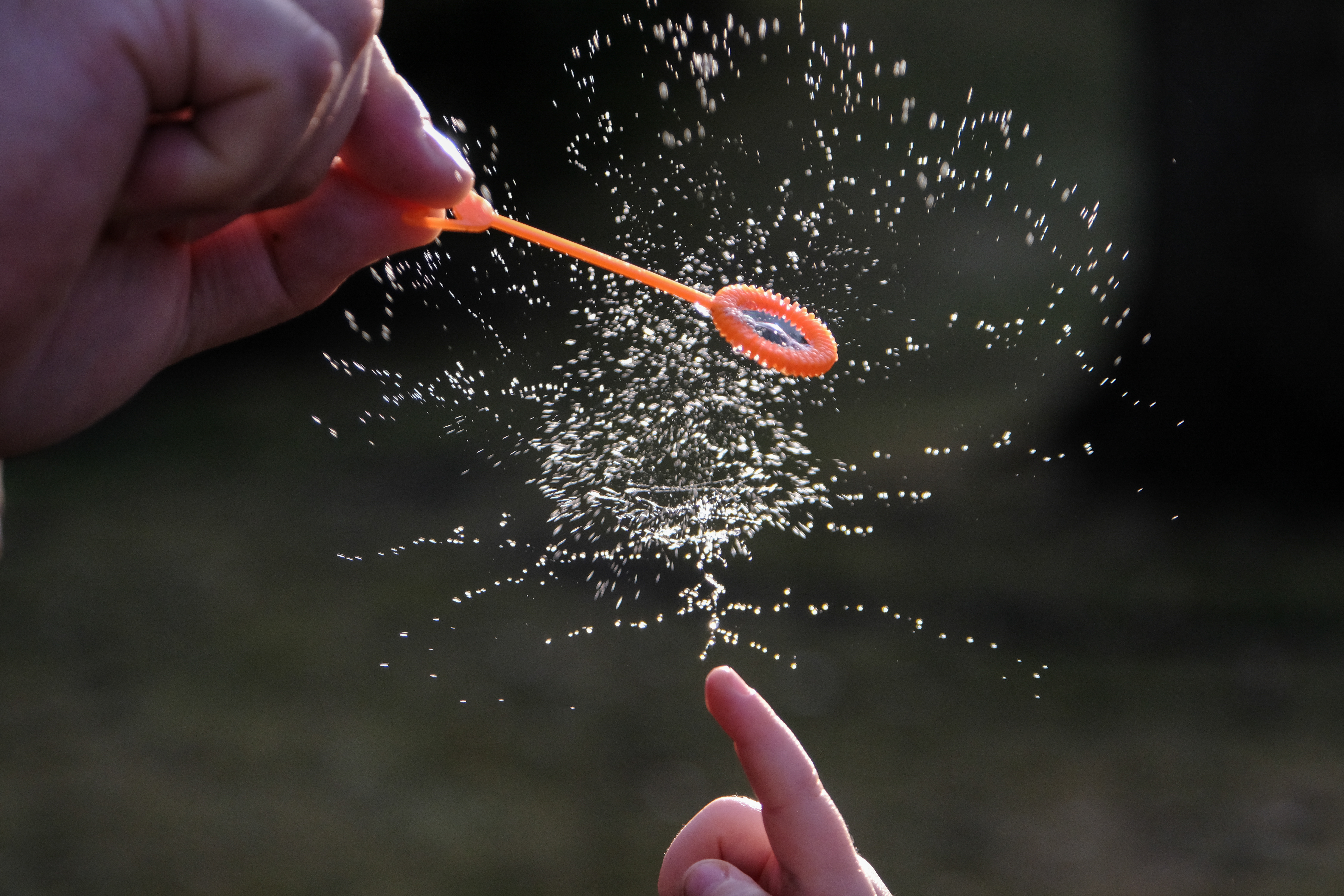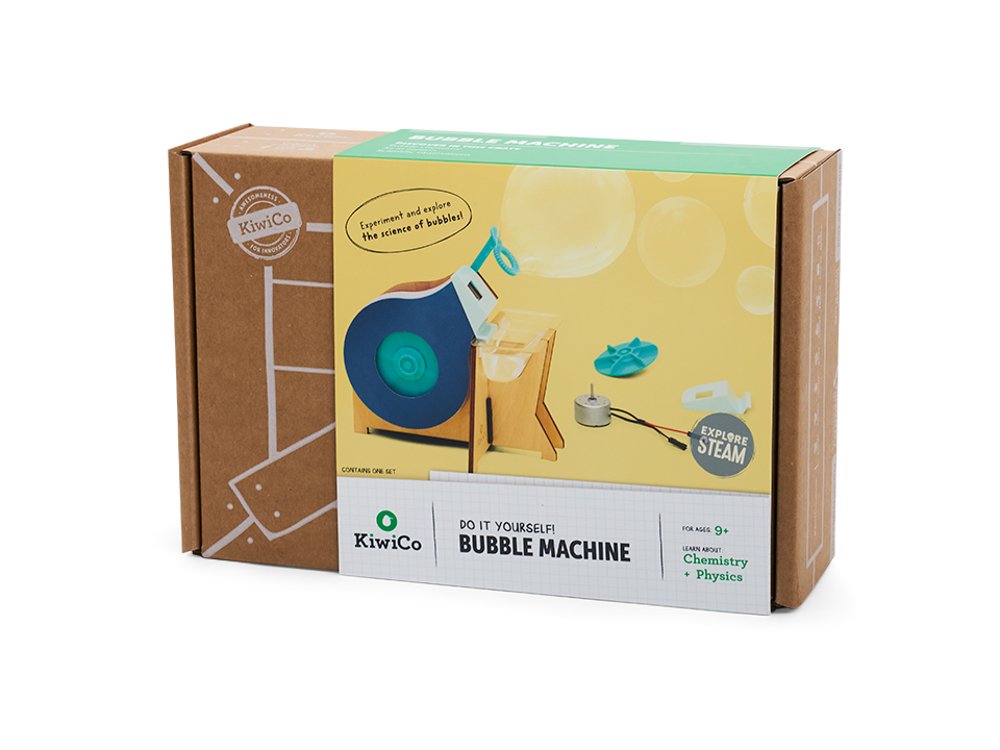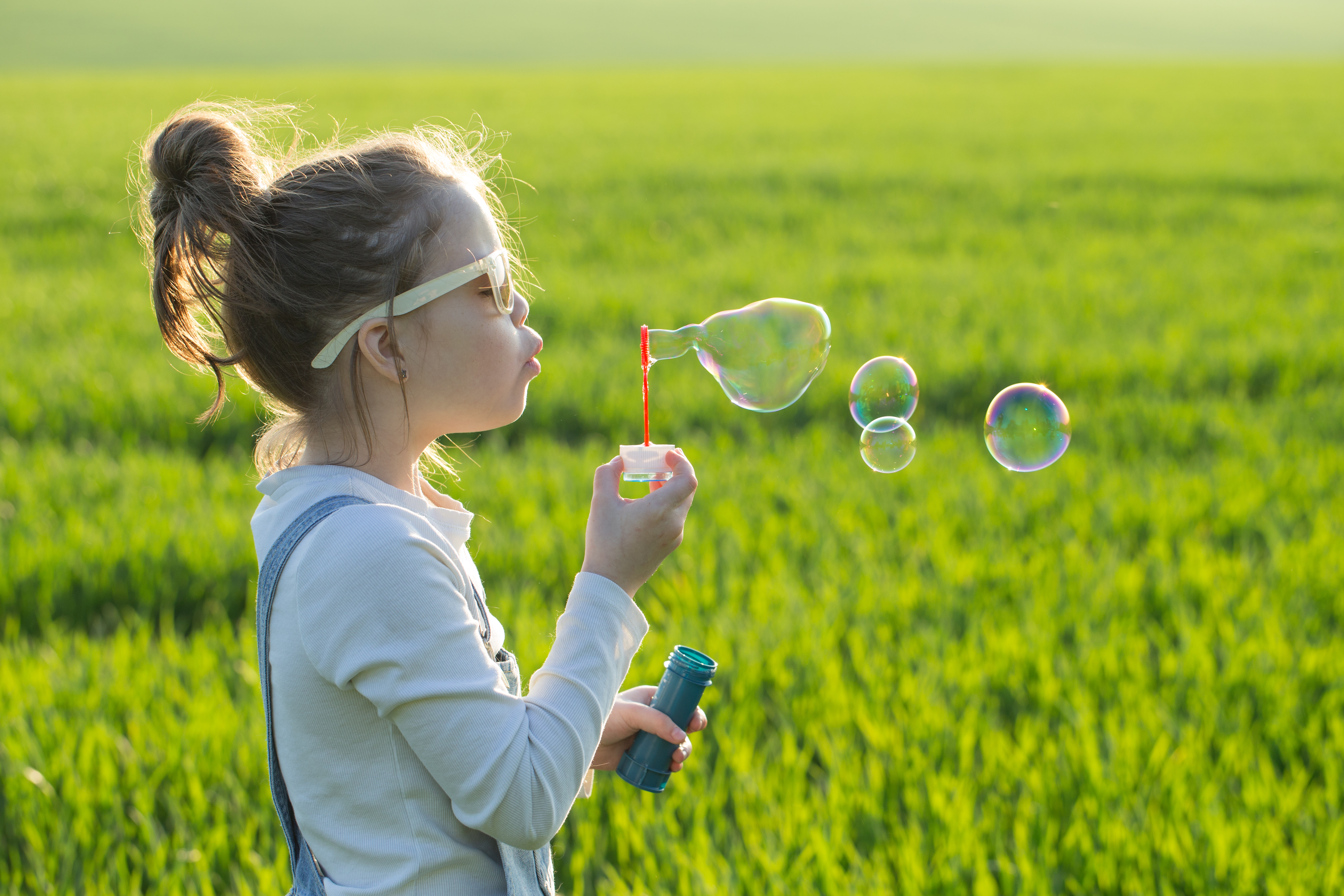What are bubbles?
A bubble is a pocket of gas (like air) trapped in a layer of liquid. If you look around, you'll see that the world is full of bubbles — from soda fizz to seafoam to the stream of air bubbles that comes out when you let out your breath underwater. But we know bubbles best as soap bubbles. Soap bubbles are thin layers of soap and water around a pocket of air. The layers are made up of one inner thin layer of water molecules between two layers of soap molecules. These layers work together to hold the air inside.

Why do we use soap in our bubble making solutions?
Water molecules stick to each other really tightly. You can see just how tightly if you use an eyedropper to drop water onto a penny. Soon enough, you'll see the water form a dome shape and start to hang over the edge. The water molecules are sticking together to stay up. That's called surface tension. You might think that a lot of surface tension would be good for blowing bubbles. The problem is, water sticks to itself so well that it can barely stretch. If you try to blow a bubble in plain water, the water tries to hold itself together, until — pop! When the water can't stretch any more, the bubble breaks. Adding soap to the water stops the water molecules from sticking together so tightly. This lets the soapy water stretch into a bubble. How? Soap molecules are special: one end of a soap molecule loves water, while the other end doesn’t like water at all. The soap molecules in a bubble want to have their water-disliking ends far away from the water, and the water-loving sides close to it. This creates a soap-and-water sandwich with the soap on the outsides and the water on the inside. The outer layers of soap let the water molecules stretch and spread apart, until voila! You have a bubble!
Why do bubbles pop?
Bubbles pop when the water molecules can't stretch any further. If something like your finger or a tree branch breaks the attraction between the water particles that make up the water layer, the air is able to get out and the bubble falls apart. Bubbles can also pop from dry air exposure, which causes the water layer between the soap layers to evaporate. One way to make your bubbles stronger and last longer is by adding special ingredients like sugar, glycerin, or corn syrup to your soap solution. These additions help make the soap layer thicker!

Want to see a renowned bubble artist talk about his creations and hear bubble scientists talk about the role bubbles play in nature, medicine, and even technology? Take a look at this video from CBS Sunday Morning.

Keep exploring science that really pops — with this creative Bubble Machine crate from the KiwiCo Store! You’ll get to put your engineering skills to the test and learn even more about bubbles too.

